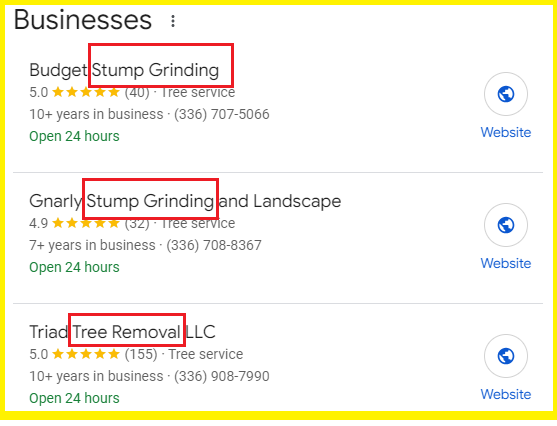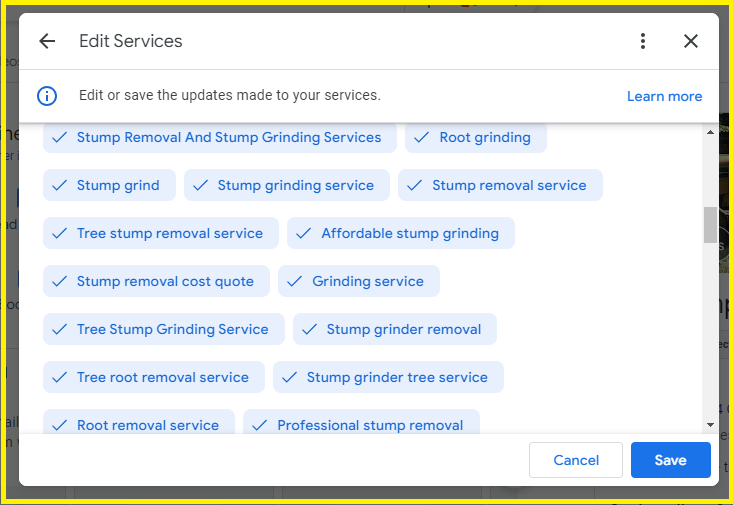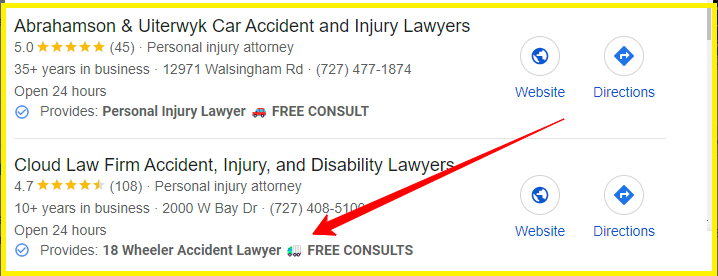Local SEO Marketing For Stump Grinding Business
The stump grinding and removal industry is a niche market, but that doesn't mean it's any less competitive. Just like in more crowded fields, standing out in local search results is crucial. Stump grinding owners and operators are experts at what they do, but the challenge often lies in making sure potential clients can find them online.
We've spent countless hours refining local SEO strategies to deliver real, measurable results for our clients. Not every tactic works across the board, and it takes a tailored approach to make a significant impact. For stump grinding and removal businesses, we’ve had to get creative, developing strategies that specifically address the unique challenges of your industry. Below, we outline 3 of our top SEO strategies designed to help stump grinding professionals rise above the competition and dominate their local market.
By focusing on what truly works for your business, these strategies ensure you not only get found but also stand out as the go-to expert in stump grinding and removal.
Our Top 3 Stump Grinding and Removal SEO Strategies:
- Setting Your Google Business Profile’s Name and Custom Services
- The Power of Service Area Pages in SEO for Stump Grinding Company
- Don’t Underestimate The Use of Long-Tail Divorce Keywords
Setting Your Google Business Profile’s Name and Custom Services
Your Google Business Profile (GBP) is more than just a listing—it's your digital storefront and your first chance to make a lasting impression. If you’re in the stump grinding business, optimizing your GBP is crucial for standing out in local searches and driving more leads.
Keywords in Your Business Name: A Game-Changer
For as long as there have been local packs on Google, keywords in the business name have had a major impact on ranking. Want to know how to rank #1 on Google? Here's a controversial but effective ranking tactic that might just help you get there.
Ever since the creation of local packs on Google, the keywords baked within a business's name have had a substantial influence over rankings. It’s one of those SEO secrets that savvy businesses have used to claim their spot in the local 3 pack. In fact, having keywords in your business name is the #2 ranking factor in a recent Local Search Ranking Factors report.
Consider this: changing your business name legally or registering a DBA (Doing Business As) that includes relevant keywords can dramatically improve your local search visibility. But before you rush to make any changes, it’s important to consult a professional to ensure it aligns with your long-term strategy.

Leveraging Custom Services in Your GBP
Everyone wants to know the key to ranking well on Google. While many theories exist about what influences Google rankings, here’s a fact: adding custom services to your Google Business Profile does positively impact your rankings. However, the extent of this impact can vary depending on your industry and market.
These custom services can influence both explicit and implicit keywords. Let me explain:
- Implicit Keywords: Imagine someone in Richmond, VA, needs a stump grinding service. If they search for "stump grinding," (an implicit keyword), Google will likely provide local results, assuming the user is looking for a nearby service. This search could show your business in the local pack if you've optimized your GBP correctly.
- Explicit Keywords: Now, let’s say another person is searching for a stump grinding service in a specific city, like Richmond. They might search for "stump grinding richmond va" (an explicit keyword). Google, recognizing the location-specific query, would prioritize results that match both the service and the specified location.
By strategically adding services to your GBP, you can improve your visibility for both types of keyword searches, making it easier for potential clients to find you.

Bonus Tip: Stand Out with Emojis
Did you know that you can add emojis to your custom services? Adding emojis can help your Google Business Profile stand out in search results, and they often get pulled in as justifications, further enhancing your visibility.

The Power of Service Area Pages in SEO for Stump Grinding Companies
If you’re not using service area pages, you’re missing out on a powerful SEO tool. These pages allow you to target specific locations where your ideal clients are searching for stump grinding services. By creating dedicated pages for each area you serve, you boost your chances of ranking higher in local searches. This means more visibility, more leads, and ultimately, more business. In an industry as specialized as stump grinding, every detail matters—service area pages can make all the difference.


Don’t Underestimate The Use of Long-Tail Keywords
When it comes to SEO, not all keywords are created equal. While it might be tempting to go after the most popular search terms, the real gold lies in long-tail keywords. These are the specific, detailed phrases that potential clients are using when they’re ready to take action. For a stump grinding business, focusing on long-tail keywords like “affordable stump grinding near me” or “tree stump removal services in [Your City]” can drive more targeted traffic to your website. This isn’t just about getting clicks—it’s about attracting the right clients who are ready to book your services.
Here are a few examples of long-tail keywords that can make a significant impact:
- Affordable stump grinding services near me
- Best stump removal company in [Your City]
- How much does stump grinding cost in [Your City]?
- Residential stump grinding for small yards
- Commercial stump removal for golf courses
- Safe and reliable stump grinding for schools
- Eco-friendly stump removal services
- Experienced stump grinding for builders
- Stump grinding services for landscaping companies
- Custom stump removal plans for large properties
By targeting these long-tail keywords, you’re not just attracting any visitors—you’re attracting the right clients who are actively looking for the services you offer. This isn’t just about getting clicks; it’s about connecting with the clients who are ready to book your services.
Incorporating these specific phrases into your website’s content, blog posts, and Google Business Profile can greatly enhance your visibility in search results, ensuring that your business stands out as the go-to expert in stump grinding and removal.
Contact Indispensable Marketing
If you’re a local stump grinding business that needs help with your Google Business Profile listing, local SEO, marketing strategy, or online presence, at Indispensable Marketing, we can help. We offer audits, consulting, or monthly local marketing services. Contact our office today for more information.




